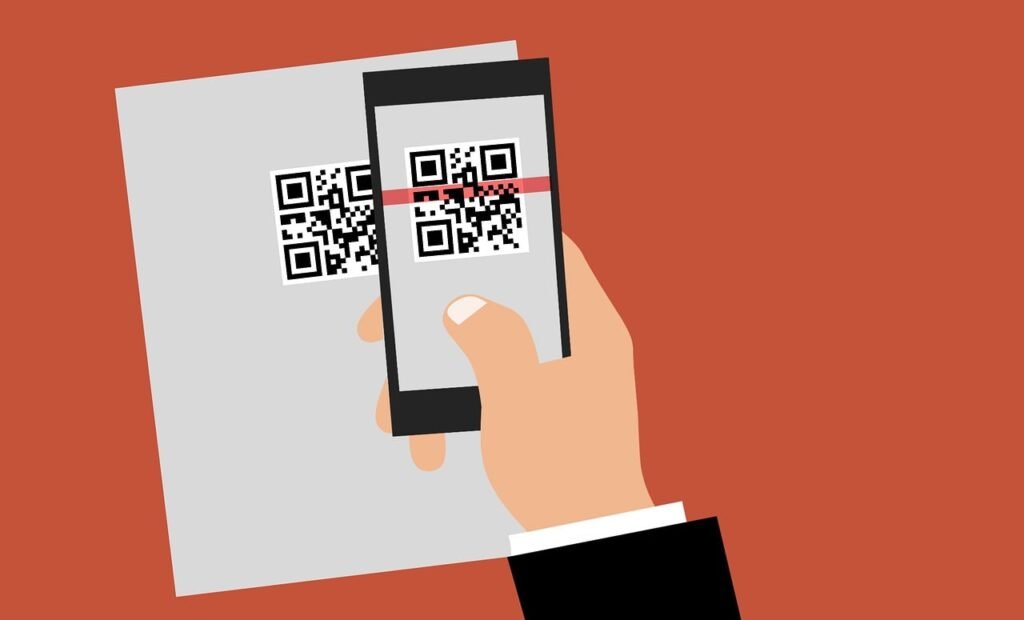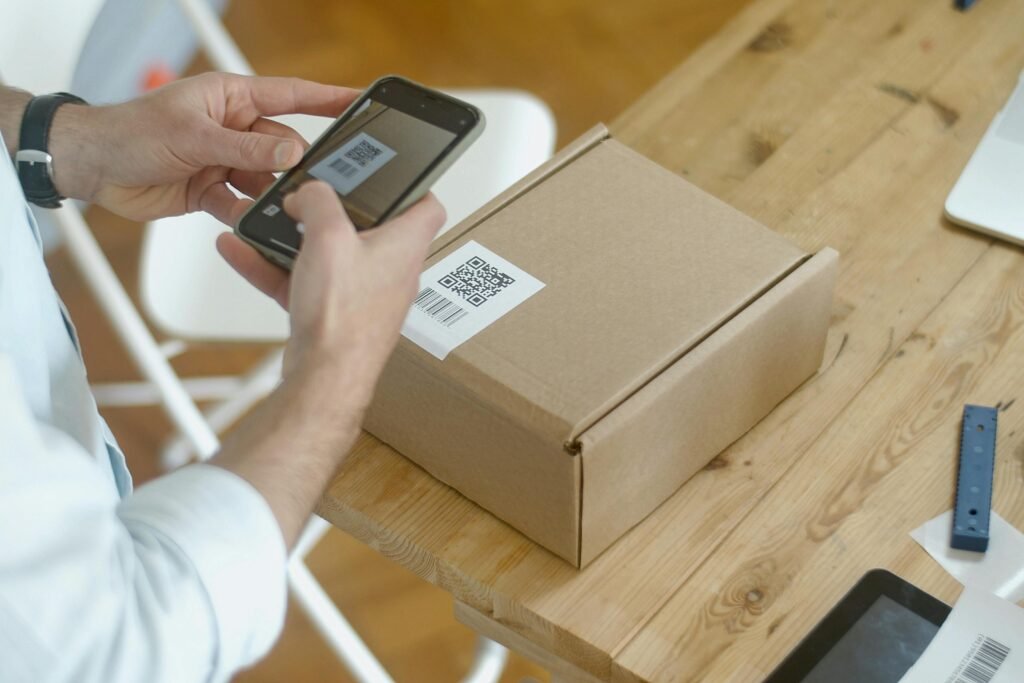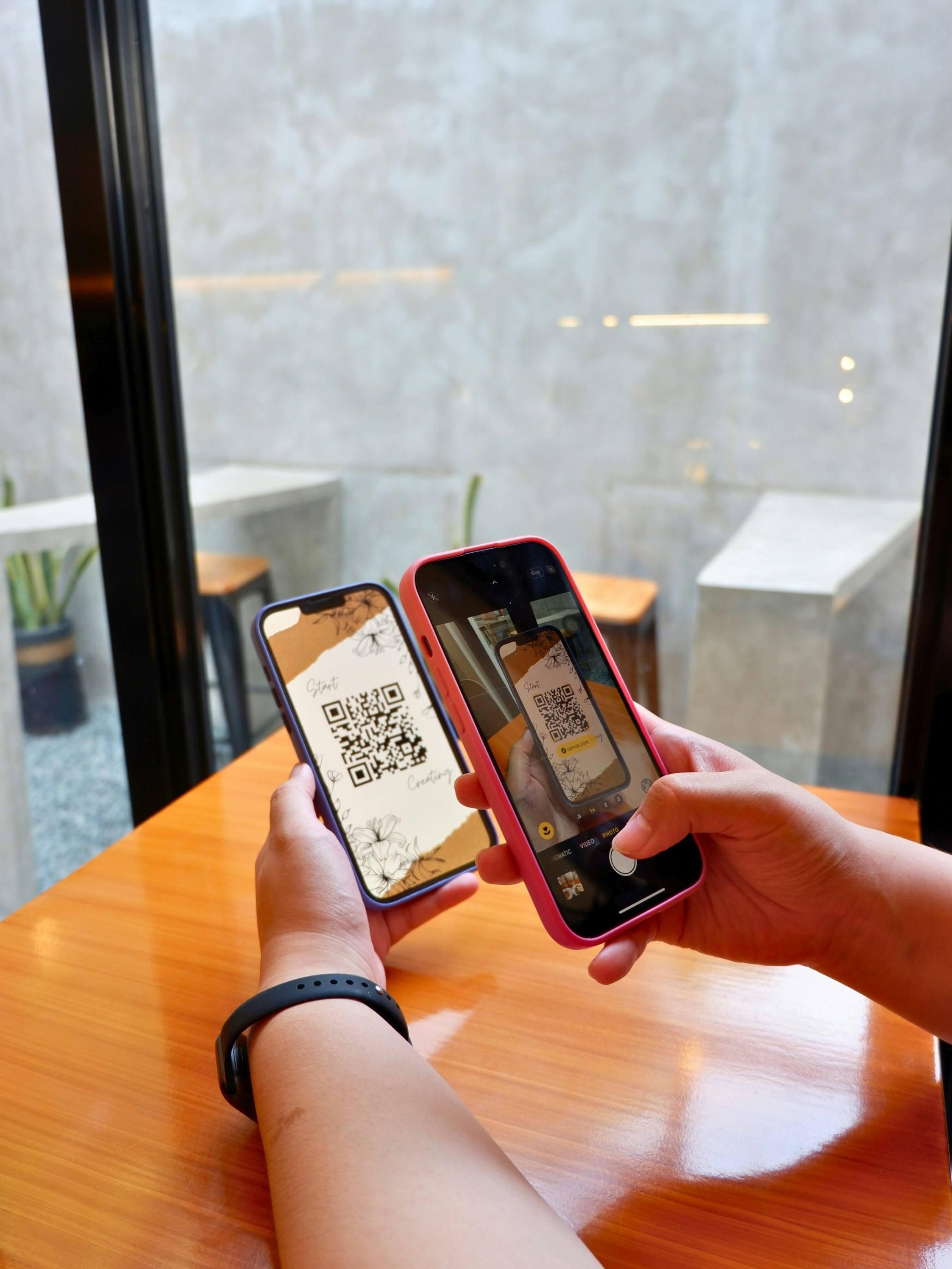Introduction to Barcodes
Barcodes are a ubiquitous technology in today’s retail and inventory management systems. Functioning as a unique identifier for products, barcodes are essential for facilitating quick and accurate data entry, aiding both vendors and consumers alike. The primary purpose of a barcode is to encode information about a product, which can be rapidly scanned using optical scanners. This method significantly reduces human error and enhances the efficiency of product tracking.
There are several types of barcodes, each designed for specific applications. The most common format, the Universal Product Code (UPC), consists of 12 digits and is predominantly used in North America. Another widely recognized type is the International Article Number (EAN), which is used globally and can vary in length. Additionally, QR codes have gained popularity due to their ability to store more complex information and their compatibility with smartphones. These variations serve different needs within inventory management and retail environments.
The functionality of barcodes in inventory management cannot be overstated. By encoding product details, such as price and stock levels, barcodes simplify the purchasing process and ensure that sales data is consistently collected. The scanning of barcodes allows for real-time inventory tracking, thus enabling businesses to maintain optimal stock levels and reduce the risk of overstocking or stockouts. Furthermore, barcodes contribute to overall sales efficiency by facilitating quicker checkouts, yielding a better customer experience.
In summary, barcodes play a pivotal role in modern retail and inventory management systems. Their various types and essential functions enable businesses to enhance efficiency and accuracy in product tracking and sales processes. As technology continues to evolve, the significance of barcodes is likely to grow, further streamlining operations in the retail sector.
Understanding Barcode Uniqueness
Barcodes serve as essential tools in retail and inventory management, allowing for the precise identification of products. They are designed to function as unique identifiers, ensuring that no two products share the same barcode. The uniqueness of barcodes is fundamental to various sectors, including logistics, e-commerce, and point-of-sale systems, where accurate tracking and management of inventory are crucial.
The mechanisms that guarantee the uniqueness of barcodes are primarily governed by a systematic allocation process established by organizations such as GS1, a global authority responsible for barcode standards. GS1 provides the framework and guidelines for how barcodes are generated, assigned, and managed. Companies that wish to use barcodes often obtain a unique prefix from GS1, which corresponds to their specific organization. This prefix forms the initial part of the barcode, ensuring that it is distinguishable from that of other organizations.
Once a company has its prefix, they can generate unique product identifiers by appending a unique number to the prefix. Often, this combination includes details about the product itself, allowing for a high degree of specificity. The numbers are carefully structured to avoid duplication, as the combination of prefix and product identifiers must be unique across all existing barcodes. Additionally, check digits are used as mathematical validations to further reduce the likelihood of errors in barcode scanning.
Moreover, GS1 adheres to international standards that establish rules for barcode formats and sizes, enabling the seamless exchange of product information across different platforms and systems. By maintaining these standards, GS1 facilitates a global supply chain that relies on the consistent and accurate use of barcodes. Consequently, barcodes emerge not merely as a series of lines and numbers, but as critical elements within an interconnected economic framework.
Implications of Duplicate Barcodes
The duplication of barcodes poses significant challenges and implications within various sectors, particularly retail and inventory management. When two products inadvertently share the same barcode, confusion often arises at the point of sale (POS). Cashiers and customers may encounter errors when scanning items, leading to incorrect pricing or misidentification of products. This not only results in frustration for the consumer but can also hinder the efficiency of checkout processes, potentially increasing wait times and negatively impacting the overall shopping experience.
Moreover, inventory management systems are heavily reliant on unique barcodes for tracking product quantities and sales data. When duplicates exist, it complicates stock replenishment and can result in inaccurate sales reports. Retailers may either over-order or under-order products due to the erroneous data generated from shared barcodes. This mismanagement could lead to excess inventory, wasted resources, or stock shortages, thereby affecting the retailer’s profitability and operational efficiency.
Another significant consequence of duplicate barcodes is the erosion of consumer trust. Customers rely on the accuracy of product information and pricing when making purchasing decisions. If they consistently experience discrepancies due to barcode confusion, their loyalty to a brand may diminish. This lack of trust can extend beyond a single product or store, potentially impacting the overall perception of the retailer in the market. Consequently, it is critical for businesses to ensure that each product is assigned a unique barcode to maintain integrity and effectiveness in their operations.
In conclusion, the implications of duplicate barcodes are far-reaching, affecting the point of sale, inventory management, and consumer trust. Addressing this issue is essential for maintaining operational efficiency and customer satisfaction in the retail industry.
Legal and Ethical Considerations
The presence of duplicate barcodes on products raises significant legal and ethical concerns that brands must navigate carefully. Legally, each barcode serves as a unique identifier, linking products to their respective manufacturers. When two products share a barcode, it can lead to confusion in the market, which may constitute trademark infringement. Trademark law protects the integrity of brands by prohibiting unauthorized use of symbols, logos, and identifiers that may mislead consumers or dilute brand value. In cases where duplicate barcodes create consumer confusion, companies can face legal repercussions, including lawsuits or penalties imposed by regulatory bodies.
Moreover, consumer protection laws are designed to safeguard shoppers from misleading practices. The use of identical barcodes on different products may violate these laws, potentially leading to legal action against both the brands involved. Consumers expect accuracy and distinctiveness in product identification, which plays a crucial role in their purchasing decisions. Brands must ensure they comply with necessary regulations to avoid harming consumers and facing legal accountability.
Aside from the legal aspects, ethical responsibilities also come into play. Companies should uphold the highest standards in maintaining unique identifiers to avoid eroding consumer trust. Engaging in practices that allow duplicate barcodes can be perceived as unethical, demonstrating a lack of regard for the principles of transparency and responsibility. Brands not only have a duty to adhere to legal guidelines but also must consider the implications of their actions on their reputation and relationship with consumers. Ethical brand management necessitates a proactive approach to ensuring that product identifiers are singular and accurate, ultimately fostering trust and loyalty among consumers.
Case Studies of Barcode Conflicts
Barcode conflicts can occur when two distinct products accidentally share the same barcode. This situation can lead to a series of complications for businesses, retailers, and consumers alike. A notable example is that of a popular retail chain that encountered issues when two different brands of electronic devices were assigned the same Universal Product Code (UPC). This led to the incorrect item being scanned at checkout, resulting in negative customer experiences and inventory discrepancies.
In another instance, a manufacturer producing organic snacks was faced with a problem when their barcode was mistakenly assigned to a competitor’s processed food product. The result was confusing for consumers, some of whom were looking for organic options but instead bought the non-organic item. The manufacturer quickly realized the gravity of the situation and worked with retailers to correct the issue by re-issuing a new barcode and ensuring that their products were clearly labeled.
These incidents highlight the importance of barcode management, especially in environments with numerous product SKUs. Companies must implement rigorous systems to track barcodes and ensure that their unique identifiers are properly assigned. Further, regular audits and checks should be performed to prevent overlapping barcodes. Lessons learned from such barcode conflicts emphasize the need for accurate data entry and verification processes to safeguard against mislabeling.
Ultimately, research into barcode conflicts demonstrates that the impact of sharing a barcode extends beyond just inventory issues. Fostering transparency in communication between manufacturers and retailers is crucial, as it can mitigate misunderstandings and enhance the overall consumer experience. These case studies serve as a reminder of the vital role that barcodes play in the supply chain and the necessity for diligent management practices.
Preventative Measures for Businesses
To mitigate the risk of issuing duplicate barcodes, businesses must implement a series of strategic and systematic measures. Effective barcode management is paramount and begins with a robust system for tracking barcode assignments throughout the product lifecycle. This responsibility should be assigned to dedicated personnel who possess an understanding of inventory management and barcode regulations. By establishing clear guidelines around the allocation of barcodes, companies can significantly reduce the likelihood of duplication.
Utilizing barcode management software can also streamline operations and enhance accuracy. Such software can automatically generate unique barcodes, ensuring that each product variant is distinctly coded. This not only prevents duplicates but also integrates with inventory systems to facilitate real-time updates. Moreover, businesses should consider platforms that allow centralized control over barcode creation, which minimizes discrepancies that often lead to duplication.
Another critical measure involves conducting regular audits of product listings and barcode assignments. Frequent audits can identify any errors or inconsistencies early, offering an opportunity for immediate rectification. By systematically verifying product information against assigned barcodes, businesses can ensure that each product is accurately represented in their inventory. This is not only important for maintaining operational integrity but also aids in upholding customer trust, as inaccuracies can directly impact sales and brand reputation.
Furthermore, providing ongoing training for employees involved in inventory management can equip them with the necessary skills and knowledge to handle barcode assignments correctly. This proactive approach fosters a culture of accountability and awareness around barcode management. By adhering to these guidelines and implementing best practices, businesses can effectively avoid the complications that arise from shared barcodes, ultimately safeguarding their operations and ensuring the integrity of their product offerings.
Consumer Impact of Barcode Sharing
The sharing of barcodes between two products can significantly impact consumers in several critical ways. One primary concern arises during the checkout process, where barcodes are scanned to identify products and their associated prices. If two distinct items share the same barcode, it may lead to confusion at the register. Cashiers might inadvertently charge customers for the wrong item, resulting in inflated or incorrect transaction totals. Such confusion can frustrate consumers, leading to disputes or demands for refunds, which in turn, may affect overall customer satisfaction.
Another significant implication of shared barcodes is related to product recalls. When a company identifies safety issues with a specific product, it typically initiates a recall to protect consumers. However, if an inaccurate barcode is associated with multiple items, consumers may struggle to identify whether they possess a potentially harmful product. This ambiguity poses safety risks, as individuals may continue using a defective item unaware of the recall or incorrectly assume their product is safe due to discrepancies in barcode labeling.
Additionally, warranty claims can be affected if two products share a barcode. Warranty registration often relies on unique identifiers to validate claims. If a consumer experiences an issue with a product sharing a barcode and attempts to file a warranty claim, they may encounter obstacles that arise from mismatches in records. Such complications can lead to consumers being unable to access essential product guarantees or support services.
Ultimately, these complications driven by barcode sharing can erode consumer trust in brands. The perception of brands can be negatively influenced by the confusion and frustration arising from mishandled transactions, recalls, and warranty issues. Consequently, brands must prioritize the integrity of their barcode systems to maintain consumer confidence and ensure a seamless shopping experience.
Future of Barcodes in Product Identification
The landscape of product identification is undergoing significant transformation, driven by advancements in technology that are enhancing the accuracy and efficiency of inventory management. Traditional barcodes, while still widely used, are gradually being supplemented or replaced by innovative solutions such as QR codes and radio-frequency identification (RFID). These technologies offer notable advantages that can mitigate issues such as the sharing of barcodes between different products.
QR codes, for example, provide a two-dimensional representation that can store significantly more information than traditional one-dimensional barcodes. This increased capacity allows for the encoding of product details, promotional information, and even direct links to online content. As consumers and retailers become more familiar with scanning QR codes, their application in product identification will likely become more prevalent. Brands can utilize these codes not only to provide information but also to enhance customer engagement by directing them to digital platforms.
On the other hand, RFID technology offers the potential to completely eliminate the risks associated with barcode duplication. RFID tags contain unique identifiers that can be read by specialized scanners without the need for direct line-of-sight. This capability not only streamlines the inventory process but also improves accuracy. As industries seek to enhance operational efficiency and reduce errors caused by misidentification, the adoption of RFID is expected to rise significantly.
Moreover, the integration of blockchain technology could further revolutionize product identification by creating a decentralized ledger of all products and their transactions. This would provide an immutable record that confirms each product’s authenticity, ensuring that similar or shared barcodes do not pose a risk to consumers or retailers. As these technologies evolve, they promise to enhance product identification systems, making them more robust and less vulnerable to challenges such as barcode sharing.
Conclusion and Call to Action
Throughout this discussion, we have explored the implications and concerns surrounding the sharing of barcodes between two products. The foundational principle of barcodes is to serve as unique identifiers for products, providing essential data relevant to inventory management, pricing, and sales transactions. When two distinct products inadvertently share a barcode, it can lead to significant confusion among retailers and consumers alike, resulting in potential errors in pricing, stock levels, and ultimately, customer satisfaction.
Maintaining unique barcodes is imperative not only for businesses, which rely on accurate product identification for efficient operations, but also for consumers, who depend on the assurance that the product they intend to purchase is indeed the product they receive. The sharing of barcodes jeopardizes this trust and can lead to misinformation, misrepresentation, and complications in returns or exchanges. As the retail environment evolves, it becomes increasingly necessary for both manufacturers and retailers to implement strict guidelines and quality control measures to ensure that each product is assigned its own unique identifier.
In light of these considerations, businesses are encouraged to adopt best practices for barcode assignment and management. This includes conducting regular audits of existing barcodes, ensuring proper training for staff involved in labeling and product management, and using barcode management systems to prevent barcode duplication. Consumers, too, should remain vigilant and aware of the ramifications of barcode sharing, enabling them to make informed purchasing decisions and advocate for better practices in product identification.
We urge both businesses and consumers to recognize the significance of unique barcodes and actively participate in promoting accuracy within the marketplace. Together, we can enhance the shopping experience, mitigate errors, and ensure a more reliable retail environment.
© barcodly.com- All rights reserved





